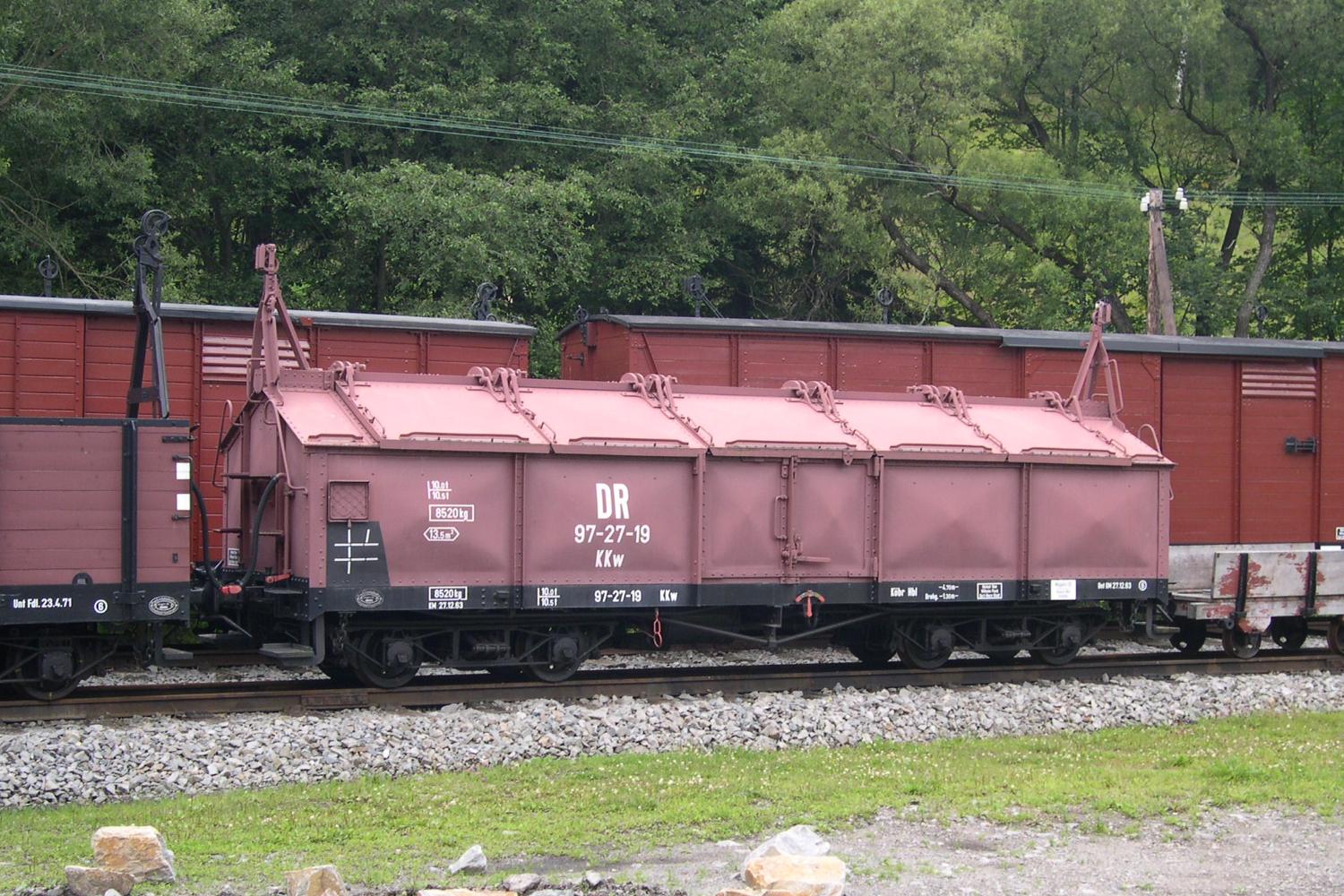|
Sliding-roof Wagon
The wagon with opening roof is a type of railway goods wagon that is, nowadays, defined and standardised by the International Union of Railways (UIC) as Class "T". They are a large category of rail vehicle, predominantly used for the transport of hygroscopic bulk commodities such as cement, plaster, lime, potash and grain. To date, there are four different types of wagon with an opening roof (by way of example, the years refer to when they entered service with the German carrier, DB): * The lidded wagon with several "roof" hatches or lids that can be opened upwards is the oldest type and is rarely seen today. Its disadvantage was that the bars to which the lids were attached meant they could only be opened individually. * In 1951 the sliding-roof wagon was built, whereby half the loading area could be opened up and loaded from above without obstruction at one time. This was achieved by sliding one half of the two-part roof over the other. * In 1958 came the swing-roof wagon which e ... [...More Info...] [...Related Items...] OR: [Wikipedia] [Google] [Baidu] |
Goods Wagon
Goods wagons or freight wagons (North America: freight cars), also known as goods carriages, goods trucks, freight carriages or freight trucks, are unpowered railway vehicles that are used for the transportation of cargo. A variety of wagon types are in use to handle different types of goods, but all goods wagons in a regional network typically have standardized couplers and other fittings, such as hoses for air brakes, allowing different wagon types to be assembled into trains. For tracking and identification purposes, goods wagons are generally assigned a unique identifier, typically a UIC wagon number, or in North America, a company reporting mark plus a company specific serial number. Development At the beginning of the railway era, the vast majority of goods wagons were four- wheeled (two wheelset) vehicles of simple construction. These were almost exclusively small covered wagons, open wagons with side-boards, and flat wagons with or without stakes. Over the course of ... [...More Info...] [...Related Items...] OR: [Wikipedia] [Google] [Baidu] |

